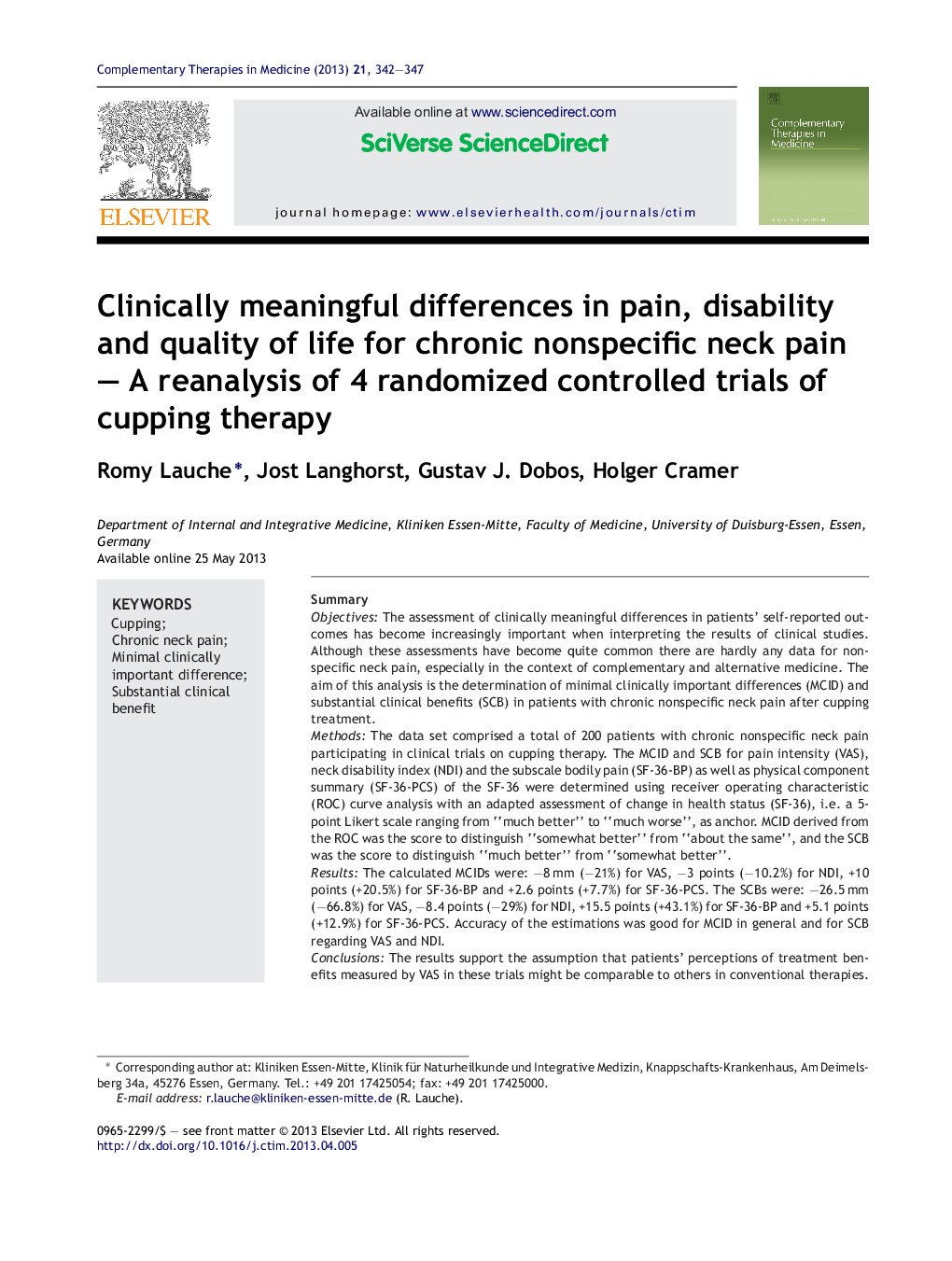| Article ID | Journal | Published Year | Pages | File Type |
|---|---|---|---|---|
| 2629297 | Complementary Therapies in Medicine | 2013 | 6 Pages |
SummaryObjectivesThe assessment of clinically meaningful differences in patients’ self-reported outcomes has become increasingly important when interpreting the results of clinical studies. Although these assessments have become quite common there are hardly any data for nonspecific neck pain, especially in the context of complementary and alternative medicine. The aim of this analysis is the determination of minimal clinically important differences (MCID) and substantial clinical benefits (SCB) in patients with chronic nonspecific neck pain after cupping treatment.MethodsThe data set comprised a total of 200 patients with chronic nonspecific neck pain participating in clinical trials on cupping therapy. The MCID and SCB for pain intensity (VAS), neck disability index (NDI) and the subscale bodily pain (SF-36-BP) as well as physical component summary (SF-36-PCS) of the SF-36 were determined using receiver operating characteristic (ROC) curve analysis with an adapted assessment of change in health status (SF-36), i.e. a 5-point Likert scale ranging from “much better” to “much worse”, as anchor. MCID derived from the ROC was the score to distinguish “somewhat better” from “about the same”, and the SCB was the score to distinguish “much better” from “somewhat better”.ResultsThe calculated MCIDs were: −8 mm (−21%) for VAS, −3 points (−10.2%) for NDI, +10 points (+20.5%) for SF-36-BP and +2.6 points (+7.7%) for SF-36-PCS. The SCBs were: −26.5 mm (−66.8%) for VAS, −8.4 points (−29%) for NDI, +15.5 points (+43.1%) for SF-36-BP and +5.1 points (+12.9%) for SF-36-PCS. Accuracy of the estimations was good for MCID in general and for SCB regarding VAS and NDI.ConclusionsThe results support the assumption that patients’ perceptions of treatment benefits measured by VAS in these trials might be comparable to others in conventional therapies. For NDI and SF-36-PCS the estimated differences were smaller than in previous reports indicating that context factors such as patient characteristics and specific treatment conditions might play an important role. Further studies on MCIDS and SCBs for chronic nonspecific neck pain seem warranted.
